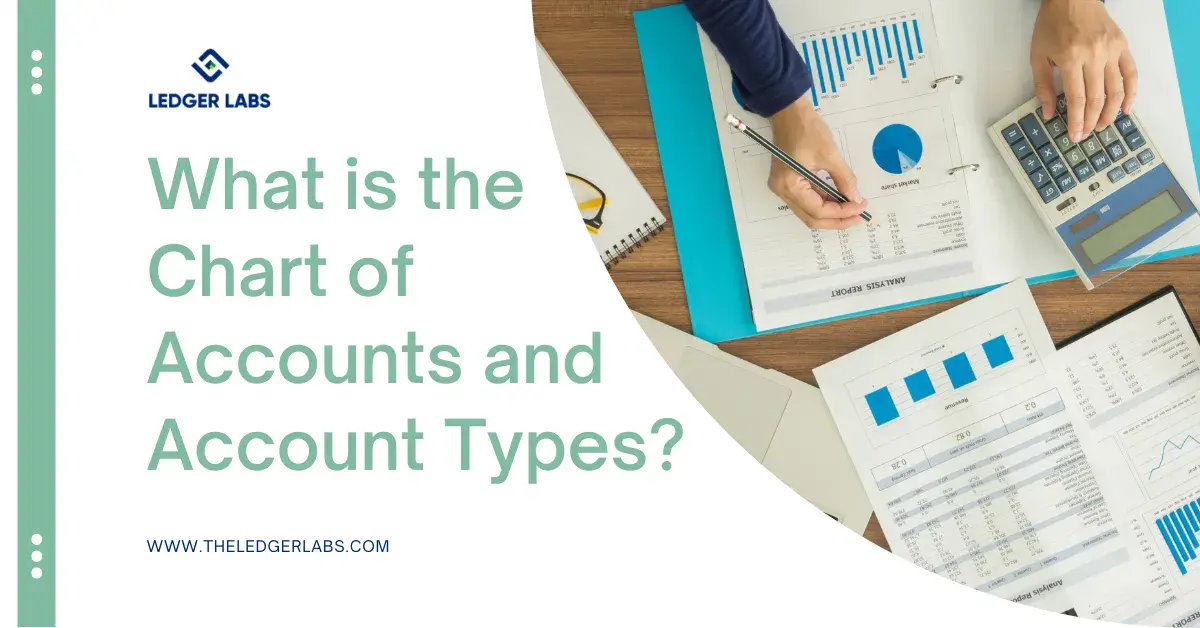What is the chart of accounts? What is the chart of account types? If you are also bothered by the same questions, then this article will help you find the perfect answer to these.
A chart of accounts or (COA) is the base of the strong financial soundness of any business. With the help of COA, the business and its top management can easily ensure that they have readily available, widely usable, and easily understandable financial statements.
There are many misconceptions about COA. People and even businesses think that COA is tough to devise and even harder to read. But the reality is quite different.
In this article, we will have a look at different factors and attributes related to the chart of accounts. From its definition to its types, we will go through everything. So, let’s proceed with the write-up and understand the chart of accounts.
What is a Chart of Accounts?
A chart of accounts can be easily explained as a record of all the accounts present with the business and comprises a general ledger. Under the chart of accounts, every type of account including the equity, asset, liability, income, and expense is included. COA is called to be the sum that you can easily derive from the data present in the Balance Sheet and the Profit & Loss account.
For the purpose of recording and easier understanding, a number is assigned to the data. This number is assigned in the following ways:
Asset: 1000–1999
Liability: 2000–2999
Equity: 3000–3999
Income: 4000–4999
Expense: 5000–5999
This number helps in separating the account on the basis of category. Thus, the main purpose of COA, which is easier financial analysis, can be achieved.
What are the Different Charts of Account Types?
Generally, the chart of account types can be divided into two subcategories: Balance Sheet and Profit and Loss Type or Income Type. This distribution shows in which one of the financial statements, does an account in the COA fall.
The Balance Sheet Type
The Balance Sheet subcategory includes data related to the:
- Assets.
- Equities
- Liabilities
- Bank and Cash Balances
- Current Liabilities/Assets
The Profit and Loss Type or the Income Type
The Profit and Loss Type or the Income Type subcategory includes data related to the:
- Expenses of all kinds
- Incomes of all kinds
- Cost of Goods Sold
So, these were the main chart of account types. Now that the details related to what is the chart of accounts and its types are figured out, let’s understand more about the subject matter with the help of some examples.
Train with the best
stay tuned
Subscribe to our newsletter to hear the latest news
General Ledger Sample Chart of Accounts
Different types of businesses use different techniques to create the Chart of Accounts. Below are the charts from some common industries:
The Chart of Accounts of a Small Business:
| Number | Account | Account Type |
|---|---|---|
| 1120 | Cash | Asset |
| 1170 | Accounts Receivables | Asset |
| 210 | Depreciation | Liability |
| 2750 | Loan | Liability |
| 3050 | Retained Earnings | Equity |
| 4678 | Actual Earnings | Income |
| 5270 | Banners | Expenses |
The Chart of Accounts of an eCommerce Organization:
| Number | Account | Account Type |
|---|---|---|
| 1120 | Cash | Asset |
| 1170 | Accounts Receivables | Asset |
| 2160 | Salary | Liability |
| 2750 | Loans | Liability |
| 3050 | Retained Earnings | Equity |
| 4678 | Actual Earnings | Income |
| 5270 | Facebook Banners | Expenses |
Note: The numbers across the accounts represent the type of accounts. For example, the 1 at the start of 1120 means Asset, the 2 at the start of 2160 means Liability, and so on.
What are the Advantages of the Chart of Accounts?
After understanding what is the chart of accounts, now you may ask, is a chart of accounts so important? The answer to this is, yes!
A chart of accounts is a very important and crucial concept that should be followed by all companies. This is because the chart of accounts offers the below advantages to you:
- The Chart of accounts allows your business to show healthy financial stability.
- If you want to show the investors that your financial position is good, you need to undergo COA.
- With the help of COA, it becomes easy for the management to follow the financial standards of reporting.
- COA makes it easy for all to ascertain the financial competence of an organization.
- COA helps the management in saving the cost of the business.
- When you undergo COA, you can easily ensure that there are no discrepancies in accounts of any kind.
- COA makes it easier for everyone to understand the reports derived from the data in accounts.
Summing Up: The Chart of Accounts
So, this was everything we had to share related to the topic. We hope that with the help of the data presented above, you were able to understand what is the chart of accounts and its related attributes. If you need help with the creation and management of the Chart of Accounts, then the advanced accountants and executives at The Ledger Labs. The executives have been known in the industry for having years of experience with various companies and fields. Hence, the executives can help you create the exact chart of accounts that are suitable for your business. As you may know, different businesses need to create a different charts of accounts, hence, getting a professional opinion can really help you.







